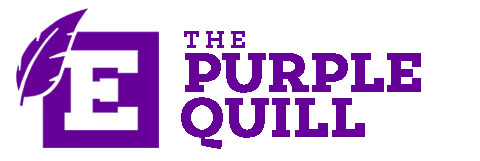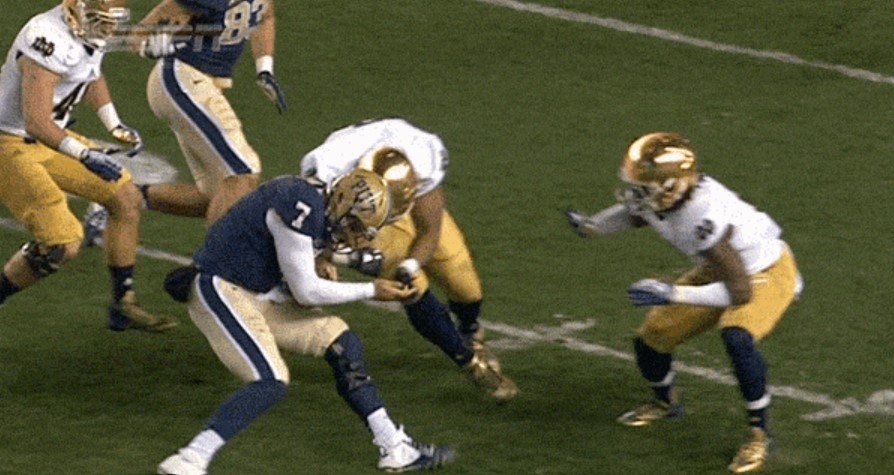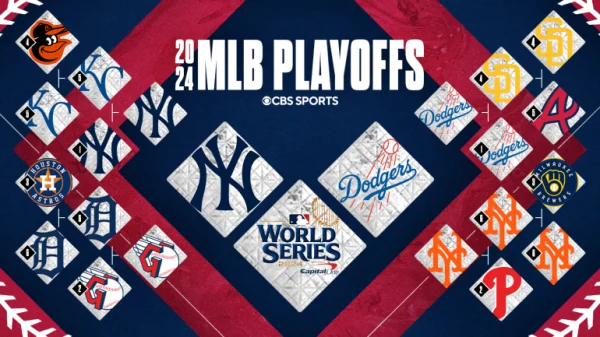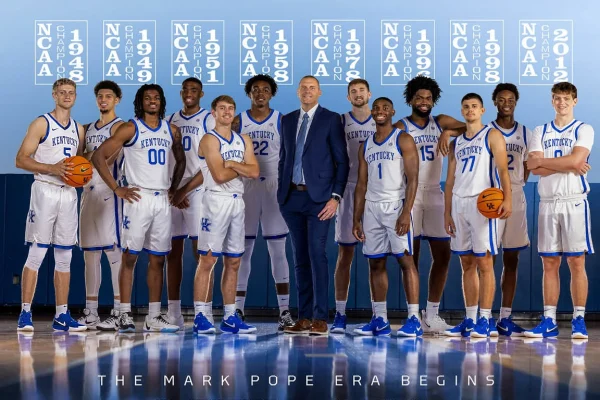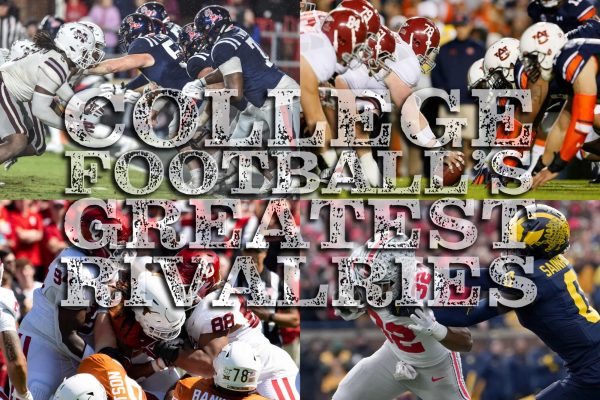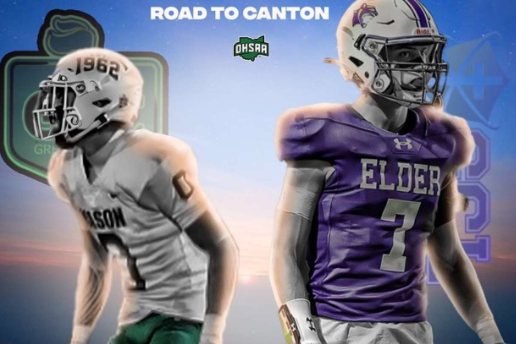Targeting; what to know and why it’s so misunderstood
Targeting background and rules that apply
Number 7 from Pitt QB Tom Savage getting a targeting hit laid upon him by Notre Dame DL Stephon Tuitt
The sport of American football has always been dangerous and has led to some people being seriously injured as a result of the violent collisions that are part of the sport.
Rules and regulations have been implemented to help lessen the dangers of the game, but it is a sport in where things happen at 110 miles per hour. Thinking that players will always abide by said rules is like expecting an elephant not to blast water over its back via its snout, it’s just not always going to happen and some might not see it happen but it does.
While rules are rules and they have to be followed, they will be broken. Whether that is because of an intentional act or an unintentional act; the rules will not always hold players back. A big part of football that many have tried to help eliminate or at least lessen is targeting. But as we can see not even harsh rules and consequences will stop it from happening.
Targeting is when a player takes aim at an opponent for the purposes of attacking with forcible contact with the crown of the helmet. This is covered in rules 9-1-3 and 9-1-4. For a player to be disqualified and the targeting foul to be enforced, all elements of a targeting foul must be confirmed by the Instant Replay Official.
There is an array of ways that one could draw a targeting penalty here are a few, launch, crouch, or leading. A player leaving his feet to attack an opponent by an upward and forward thrust of the body to make forcible contact in the head or neck area is called a launch. A crouch followed by an upward and forward thrust is when a player attacks with forcible contact at the head or neck area, even though one or both feet are still on the ground. Leading can be done with the helmet, shoulder, forearm, fist, hand or elbow to attack with forcible contact at the head or neck area.
CLICK TO PLAY ME!
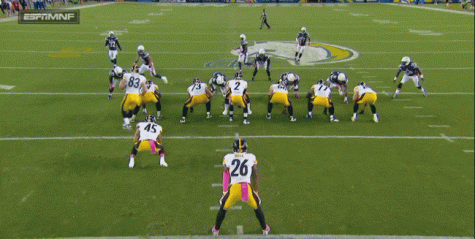
However, one person that is allowed to use their head and only that person is the running back of every team. Every team has them every team needs them; the running backs are aloud to use their heads like rams when is action with the ball. Mainly most if not all hunch over the ball exposing their head straight down or at a 45o or lower angle, therefore enhancing the likelihood of running backs to get more head related injuries. I know from experience that the running backs go through a hole like a silver bullet racing from a revolver chamber, and every time I can remember the running back always hunched over and rammed through the line leading with his head. This has forever made me think because it’s illegal for other players to hit head to head when a player is with the ball, but it’s fine when a running back makes head to head contact first. Leading or exposing your head to any kind of hits can result in a colossal of injuries.
CLICK TO PLAY ME!
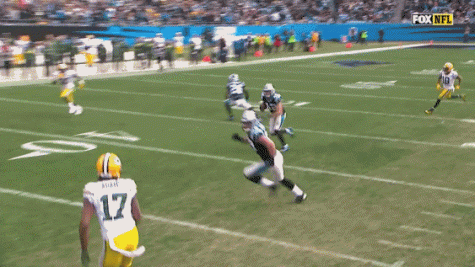
Targeting hits can led to player injuries that could be career ending, and even in some cases fatal. Concussions and CTE from said hits are one of the biggest concerns, however injuries to the neck, back, and spinal cord are still apparent. These rules are implemented to protect a defenseless player; A ball carrier who has established himself as a runner is considered able to defend themselves. However, a defenseless player can still be on the defense by having what’s called a blindside block placed upon them.
CLICK TO PLAY ME!
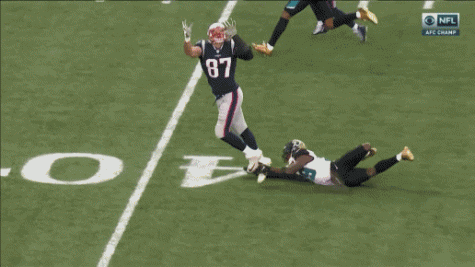
Penalties are used as a way of restraining the players and costing the defense (or opposite side) to either gain or lose 15 yards plus a first down or minus a down. Additionally, the player who drew the penalty will be ejected from further participating in the contest. There is an array of ways that one could draw a targeting penalty here are a few, launch, crouch, leading, etc. A player leaving his feet to attack an opponent by an upward and forward thrust of the body to make forcible contact in the head or neck area is called a launch. A crouch followed by an upward and forward thrust is when a player attacks with forcible contact at the head or neck area, even though one or both feet are still on the ground. Leading can be done with the helmet, shoulder, forearm, fist, hand or elbow to attack with forcible contact at the head or neck area.
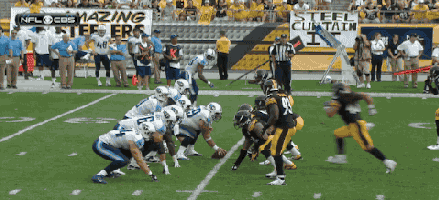
Targeting has been around since the day that American football was created. But easy fixes to this problem can be put in place to help counteract these types of fouls from ever happening again. While some changes could be minuscule or quite drastic, with one being to fine the players more or add more yardage to the penalty. While drastic measures like switching the hard covered helmets back to leather or more softer ones to change the way people hit each other. Back to the olden days I say, let the leather breathe.
In conclusion, targeting in American football can be a nasty sight especially when they cause a mass amount of damage. However, multiple rules and regulations have been set in stone to hopefully help, but as we can see years after said rules were put into place nothing seemed to have changed.
Running backs are immune to the rules of targeting due to them being allowed to use their heads when holding the ball, or for defenseless players, and on the occasions of absurd nasty hits on another player in the contest. Penalties are thrown upon a targeting hit when seen and will either cost a team 15 yards and a lost of a down, or a gain of 15 yards and an automatic first down. Furthermore the player who created the targeting hit would be ejected upon confirmation of New York or the officials’ rule.
While targeting is sort of rare but not always the case, if the issue is of great concern among football coaches, owners, doctors, officials, etc. we expect to see a change. However, I don’t think that the right move will be taken for a long time, if ever!

"No man has a good enough memory to be a successful liar." -Abraham Lincoln



